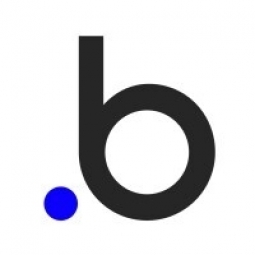Technology Category
- Infrastructure as a Service (IaaS) - Cloud Databases
- Platform as a Service (PaaS) - Application Development Platforms
Applicable Industries
- Cement
- Cities & Municipalities
Applicable Functions
- Product Research & Development
Use Cases
- Building Automation & Control
- Smart City Operations
About The Customer
GigCompare primarily serves gig workers who are part of the growing gig economy. These include drivers for ride-hail services like Uber and delivery personnel for platforms like DoorDash and Instacart. The app is particularly beneficial for these workers as it helps them understand their pay structure and compare their earnings with other gig workers in their city. By providing a clear estimate of hourly net earnings, GigCompare empowers gig workers to make informed decisions about their work and potentially negotiate better pay.
The Challenge
The gig economy, encompassing services like Uber and delivery platforms like DoorDash and Instacart, has been growing rapidly. However, gig workers often struggle to understand their net hourly earnings, especially after accounting for expenses such as gas and vehicle depreciation. In many cities, gig workers earn less than the local minimum wage after expenses, and the COVID-19 pandemic has further driven down pay for many workers across various platforms. The primary challenge was the lack of a tool that could help gig workers estimate their hourly net earnings and compare them with other gig workers in their city.
The Solution
GigCompare, an app developed by Charlie Kemp, addresses this challenge by making it easier for gig workers to estimate their hourly net earnings. The app requires gig workers to enter a few details from a recent pay statement, their city, and the app they work for. GigCompare then uses this information to calculate an hourly net earnings estimate using expense averages/benchmarks tracked in its database. Users can then compare their estimated hourly earnings against the minimum wage and GigCompare’s estimate of average gig worker earnings in their city. The app was built on Bubble, a no-code platform, which allowed Kemp to turn his design mockups into a functioning app in less than two weeks.
Operational Impact
Quantitative Benefit

Case Study missing?
Start adding your own!
Register with your work email and create a new case study profile for your business.
Related Case Studies.

Case Study
Turning A Stadium Into A Smart Building
Honeywell created what it called the “intelligent system” for the National Stadium in Beijing, China, turning the venue for the opening and closing events at the 2008 Summer Olympics into a “smart building.” Designed by highly controversial artist Ai Weiwei, the “Bird’s Nest” remains one of the most impressive feats of stadium architecture in the world. The 250,000 square meter structure housed more than 100,000 athletes and spectators at a time. To accommodate such capacity, China turned to Honeywell’s EBI Integrated Building Management System to create an integrated “intelligent system” for improved building security, safety and energy efficiency.

Case Study
System 800xA at Indian Cement Plants
Chettinad Cement recognized that further efficiencies could be achieved in its cement manufacturing process. It looked to investing in comprehensive operational and control technologies to manage and derive productivity and energy efficiency gains from the assets on Line 2, their second plant in India.
.png)
Case Study
Smart Street Light Network (Copenhagen)
Key stakeholders are taking a comprehensive approach to rethinking smart city innovation. City leaders have collaborated through partnerships involving government, research institutions and solution providers. The Copenhagen Solutions Lab is one of the leading organizations at the forefront of this movement. By bringing together manufacturers with municipal buyers, the Copenhagen Solutions Lab has catalyzed the development and deployment of next-generation smart city innovations. Copenhagen is leveraging this unique approach to accelerate the implementation of smart city solutions. One of the primary focus areas is LED street lighting.

Case Study
Buoy Status Monitoring with LoRa
The Netherlands are well-known for their inland waterways, canals, sluices and of course port activities. The Dutch Ministry of Infrastructure indicates that there are thousands of buoys and fixed items in and near water environments that would profit from IoT monitoring. One of the problems with buoys for example, is that they get hit by ships and the anchor cable breaks. Without connectivity, it takes quite some time to find out that something has happened with that buoy. Not to mention the costs of renting a boat to go to the buoy to fix it. Another important issue, is that there is no real-time monitoring of the buoys at this moment. Only by physically visiting the object on the water, one gains insight in its status.

Case Study
China Mobile Smart Parking
Smart Parking, powered by NB-IoT technology, is making it easier for drivers to find free parking spots. Cities can better manage their parking assets and maximize the revenue available to them as a result. Drivers searching for parking create congestion and pollution by circling and hunting for available parking. Smart Parking services are able to significantly ease these problems by guiding a driver directly to a parking space.




